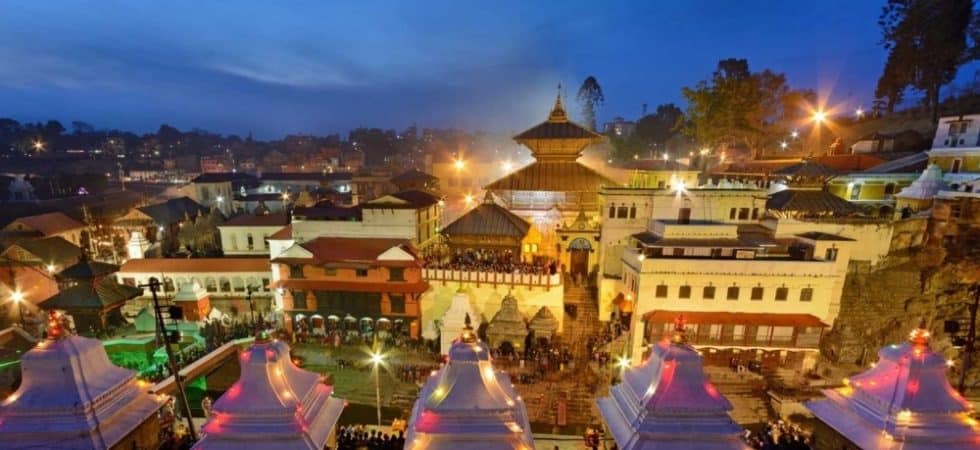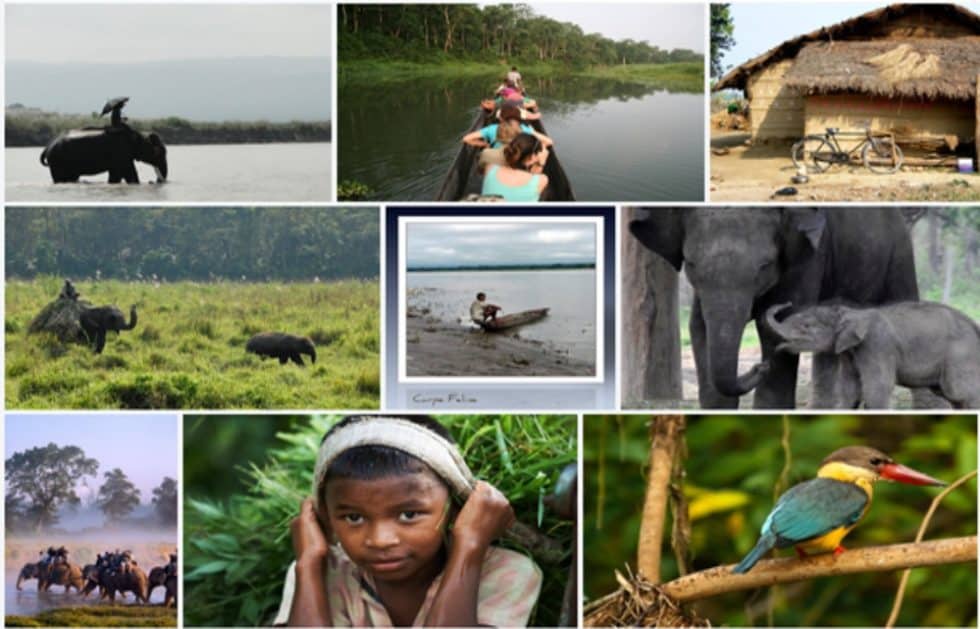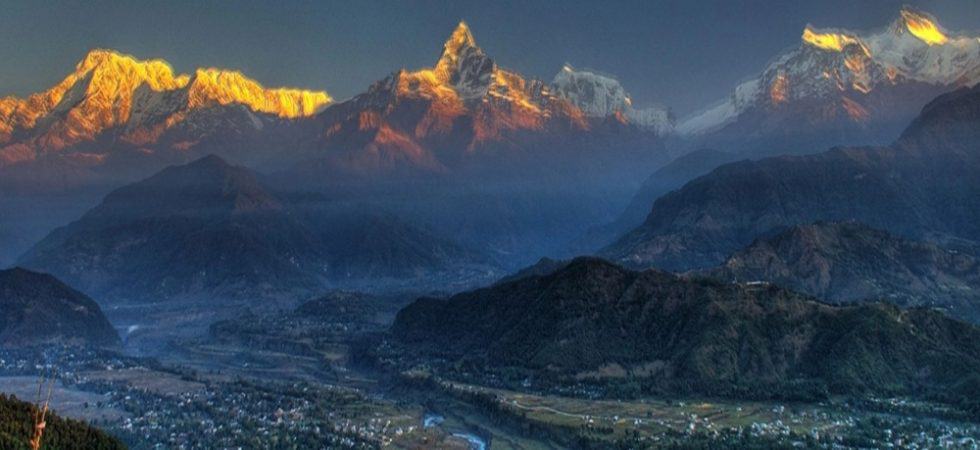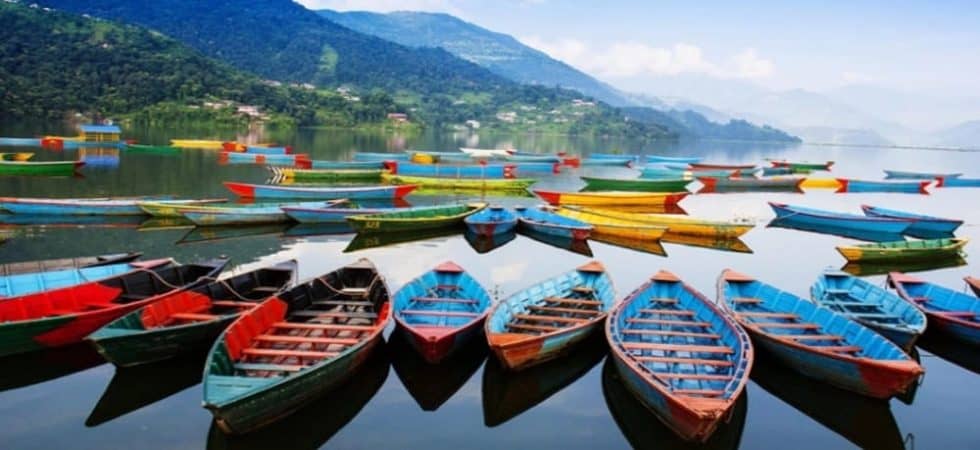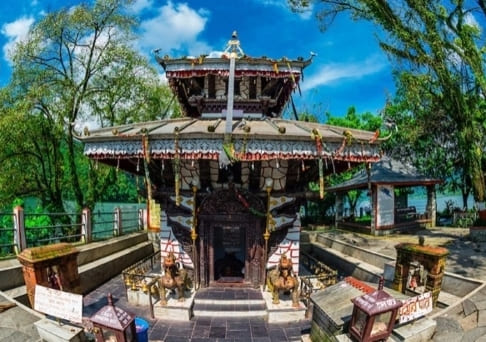Contact Us
Itinerary
Day
01
Arrive Kathmandu (Flight – TBA)
Arrive Kathmandu and you will be met at the airport by a representative holding a signboard with your name displayed. You will be escorted to your hotel and assisted with check in. The essence of the ancient, along with the modern day influence can be observed in the lifestyle and the buildings in the city. Kathmandu is the center for religion, culture and politics of the whole of Nepal.
Overnight: Kathmandu
Day
02
Kathmandu
After breakfast proceed for full day sightseeing tour of Pashupatinath Temple, Boudhanath Stupa & Kathmandu City, Swayambhunath.
PASHUPATINATH
One of the most sacred Hindu temples of Nepal – Pashupatinath Temple is located on both banks of Bagmati River on the eastern outskirts of Kathmandu. The main temple of Pashupatinath is a building with a bunk roof and a golden spire. It is located on the Western bank of Bagmati and is considered a masterpiece of Hindu architecture. Pashupatinath is the most important temple dedicated to god Shiva. Every year this temple attracts hundreds of elderly followers of Hinduism. They arrive here to find shelter for the last several weeks of their lives, to meet death, be cremated on the banks of the river and travel their last journey with the waters of the sacred river Bagmati, which later meets the holy river Ganges.
BOUDHANATH
This Stupa is situated 11km/7 miles from Kathmandu City is one of the biggest and holiest Buddhist site in Nepal. It stands with four pairs of eyes in the four cardinal direction keeping watch for righteous behavior and human prosperity. The squiggle between the eyes is the Sanskrit numeral one, symbolizing the unity of all things. This Buddhist Stupa is believed to have been built by King Man Deva as per the advice of the Goddess Mani Jogini. It is built on an octagonalbase. Prayer wheels at the base of the temple are inscribed with the Tibetan mantra ‘Om Mani Padme Hom’. At ground level there is a brick wall with 108 images of meditational Buddha inset behind copper prayer wheels. Sometimes referred to as “Little Tibet”, Boudhanath is still the best place in the Kathmandu Valley to observe traditional Tibetan lifestyle. The shrine is surrounded by houses of Lamas or Buddhist priests .There are various Tibetan monasteries surrounding BoudhanathStupa as it is the focal point of Tibetan Buddhism in Nepal. Boudhanath is a UNESCO world heritage site, and a destination not to be missed while traveling in Nepal.
KATHMANDU CITY
Listed as one of the eight Cultural World Heritage sites by UNESCO, Kathmandu Durbar Square is a cluster of ancient temples, palaces, courtyards and streets that date back to the 12th to 18th centuries. The square is known to be the social, religious and urban focal point of the Capital City. The Palace Complex was the Royal Nepalese residence until the 19th century and is the site of important ceremonies, such as the coronation of the Nepalese monarch. The palace is decorated with elaborately-carved wooden windows and panels. It houses King Tribhuvan Memorial Museum and the Mahendra Museum. Kathmandu Durbar Square was where the city’s kings were once crowned and legitimized, and from where they ruled (durbar means ‘palace’). As such, the square remains the traditional heart of the old town and Kathmandu’s most spectacular legacy of traditional architecture.
SWAYAMBHUNATH
The Buddhist temple of Swoyambhunath is situated on the top of a hill, west of Kathmandu. It is the one of the oldest religious complexes in Nepal; dating back to the 5th century A.D. Swoyambhunath Stupa has a shape of a dome standing on a base which represents the entire world. A pair of big eyes on each side of the dome symbolizes Wisdom and Compassion. They are, in fact, Buddha’s eyes — they give the impression as if he is looking right into you no matter where you stand. The Swoyambhunath complex consists of a stupa, a variety of shrines and temples, some dating back to the Lichchhavi period. A Tibetan monastery, museum and library are more recent additions. The site has two access points: a long stairway, claimed to have 365 steps, leading directly to the main platform of the temple, which lies in the east direction; and the other way to reach the temple is via a road trip around the hill leading to the southwest entrance.
Overnight: Kathmandu
Day
03
Kathmandu – Chitwan (Drive 170 Kms / 04-05 Hrs)
After breakfast check out from the hotel and drive to Chitwan which is approx. 170km. away and takes 4-5 hours drive on a normal road condition.
CHITWAN
The Royal Chitwan National park, the lush Valley of Chitwan is situated in the foothills of Churia ranges. It is 75 airmails South West of Ktm and houses the first National Park of the country. The Royal Chitwan National Park is famous for its variety of Wildlife especially the Great Indian One horned Rhinoceros and the elusive Royal Bengal Tiger. There are many Wildlife Lodges/Camps operating Safari style Lodges within the park area and offer Elephant excursions in the heart of the Jungle to view game. Excellent opportunities for bird watching and excellent chance to see four kinds of deer, wild roar, rhinoceros, monkeys, sloth bear, gaur and many other smaller mammals. Then check-in to Lodge and Refresh.
Lunch will be served at the Lodge
Jungle activities as per Lodge program
Canoeing (Subject to weather conditions & water level in the river)
During the trip you are accompanied by a guide who will tell you about the animals. Off course you don’t have to peddle yourself as a boatman joins the ride. With slowly pass the shores of the rivers that take you on a silent trip down the Rapti River to view aquatic birds, crocodiles and the animals of the river banks.
Tharu Stick dance Farmers of the nearby villages will show some of their traditional skills and dances.
Dinner will be served at the Lodge
Overnight: Chitwan
Day
04
Chitwan
After breakfast at the Lodge enjoy jungle activities as per Lodge program.
Jungle walk and Bird Watching
Experiencing the wild plains of Nepal and bird watching with our naturalist. This walk provides you with the ideal situation of viewing the wild animals very close. Bird Watching is always best on foot. Lodge specialists will help you spot identify the different varieties of birds, both local and migratory, that are found in Nepal.Out of 519 species of the birds we have recorded 276 species in our area. Our guides will help you to identify some of the species of these birds.
Village Walk
The jungle Scenery, birds and animals alone do not make up the unique features of Chitwan National Park. The indigenous local people, the Tharus, are also of immense interest. A professional guide/expert naturalist will accompany you through the area and help you gather insights into the Tharu way of life.
Jeep Safari
Jeep Safari is an exciting ride on an open top jeep into the dense forest of jungle. It is possible to closely observe the wild animals as well as take their snaps during jeep safari. Jeep Safari offers relative safety from wild animals. Drive in to the heart of the park for a good chance to spot the rear species, the drive take you long time-worn trails with great opportunities of viewing a big animal.
Elephant briefing/Bathing program
Learn more about these fascinating animals during a visit to our elephant stables. (Note: Elephant bathing is done during summer season as elephant loves to bathe in the river willingly. Elephants are not forced to take bath during the cold season/day)
Slide presentation
One of our jungle experts will introduce background data and history of the Chitwan National Park as well as some other topics relating to wildlife. Your questions are most welcome.
Village Walk
Village tour is famous for close and personal observation of the Tharu culture. Tourists like to take village tour to witness the daily lifestyle and activities of the Tharu community. The Tharu community reside along the entire length of the Terai plains of Nepal but Chitwan are is especially popular for their traditional culture. There is a choice between foot or tonka ride for village tour. It is advisable to take the aid of a guide during the tour to better understand the local customs.
Lunch & Dinner will be served at the Lodge
Overnight: Chitwan
Day
05
Chitwan – Pokhara (Drive 160 Kms / 04-05 Hrs)
After breakfast check out from the hotel and drive to Pokhara.
POKHARA
Pokhara is the city of lakes that lies at the foothills of the majestic Annapurna range and consists of thick forests, gushing rivers and clear lakes. It offers a perfect getaway from the busy and chaotic life of the city. If Kathmandu is the cultural hub of Nepal, then Pokhara is the center of adventure. Pokhara is an adventure paradise offering activities such as paragliding, trekking, and mountain biking, ultra-light flight, zip line adventure, bungee jumping, rafting, kayaking and much more. It is the only place in the world from where one can enjoy the magnificent views of mountains having elevation above 8000 meters sitting below 1000 meter above sea level.
Overnight: Pokhara
Day
06
Pokhara
After breakfast proceed for half day sightseeing tour of Pokhara City and 45-mins Boat Ride in Lake Fewa.
SIGHTSEEING IN POKHARA
Other sightseeing places of Pokhara are Davis Falls, Chamero (Bat) Cave, Gupteshwor Cave, Seti Gorge etc.
DAVIS FALL’S
Witness a unique waterfall that lies 2 Km from central Pokhara City. The water fall directly goes into a deep and narrow canal with no ends. It is believed that this deadly waterfall took the life of a tourist named David, who fell down into the cannel and was never found, and hence the name David waterfall, named in his memory by the people of Pokhara. This place has many nick names like Davy’s fall, David’s fall or Davis’s fall, all mean the same thing `The Davis Water Fall’ in the city.
Gupteswor Mahadev Cave
GupteshworMahadev cave is one of the longest caves in Nepal. On the way to cave, there are shining stones seen everywhere and in the temple is big stone that looks like snake’s head and tortoise which is consider as the image of the lord Shiva. Second part is very beautiful and you see shining stones and different types of rocks like bee hives.
Visit Tal Barahi Temple with 45 Minutes boat ride at Lake Fewa
TAL BARAHI
Tal Barahi Temple, also known as Lake Temple or Barahi Temple is a two-story pagoda temple located in the Kaski District of the Gandaki Zone in western Nepal. It is a hindu temple of the Goddess Durga (Barahi), the protector of gods. It is located in a small island on the south east section of Phewa Lake in Pokhara. The temple is used for worship by both Hindus and Buddhists.
THE FEWA (OR PHEWA) LAKE
1.5 kilometer long, second largest lake in Nepal, offers an excellent view of the mountains and their reflections on the lake. Many tours and trekking operators and hotels are located on the lakeside. One can easily find a place to sit back, relax and enjoy great meal while enjoying scenery here. You will also enjoy 01 hrs boating on the lake. Most hotels and guest houses have traditional designs and layouts which match with the surrounding views.
SETI RIVER
It is mysterious wonder of Pokhara, originated from the Machhapuchhre glacier. Seti (which means white in Nepali) River runs through the main city area in about 40 meters depth. The river provides a perfect view of its dreadful rush before it disappears at Bagar into a deep gorge. The gorge is visible from the bridges in the city. After sightseeing transfer back to hotel and rest of the time at leisure.
Overnight: Pokhara
Day
07
Pokhara – Kathmandu (Drive 210 Kms / 06-07 Hrs)
After breakfast proceed for half day sightseeing tour of Pokhara City and 45-mins Boat Ride in Lake Fewa.
MANAKAMANA
Manakamana is temple of Durga Bhawani (Hindu Goddess), situated in Gorkha District of Nepal. Manakamana means the “Wish from Heart”. It is believed that Goddess Manakaman fulfills the wishes of ones who worship her with pure heart. It is very true when someone wish something from the heart; it is fulfilled by the God. It is situated at about 1300 meters at a top of a hill surround by a small village community. It is about 9 Km north-east of the town of Mugling and at about 90 Km West from Kathmandu and East from Pokhara. Manakamana is Hindu Goddess so she is worshiped with offerings of flower, sound, scent, dress, make-ups and colors. There is a tradition of sacrificing animals at the temple. People can be seen standing in line with poojasamagri (worship materials) in hand and some of them carrying duck, cock or goat with them. People seem to enjoy standing in the line without food, some even with no water. Upon arrival in Kathmandu, check into the hotel.
Overnight: Kathmandu
Day
08
Depart Kathmandu (Flight – TBA)
Today check out at 1200 Hrs. and transfer to the airport to board the flight to onward journey. Your amazing excursion to this wonderful land has come to an end!!


